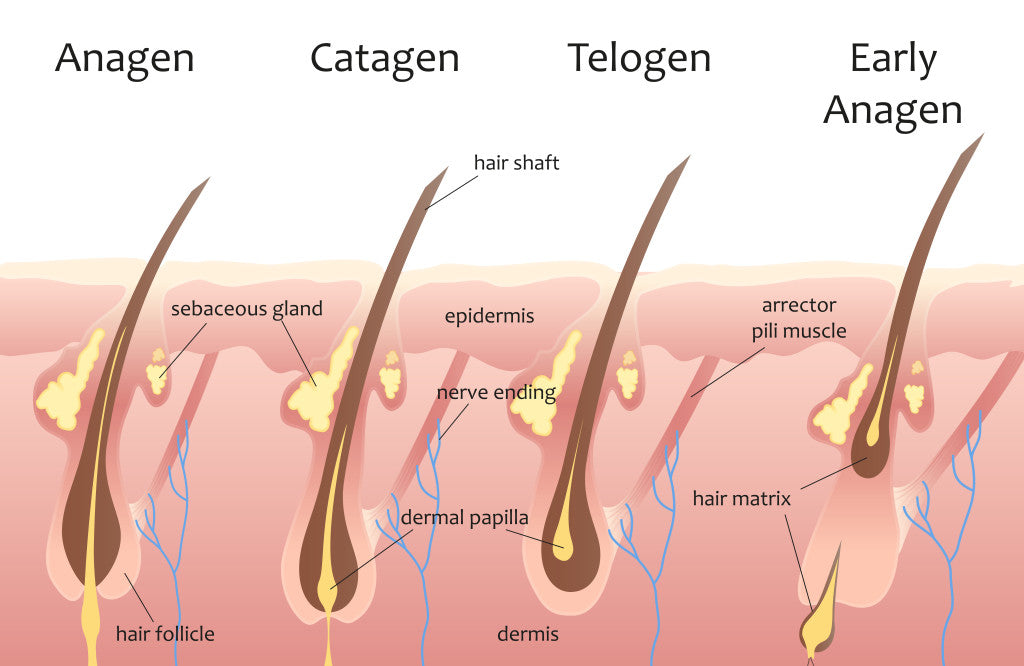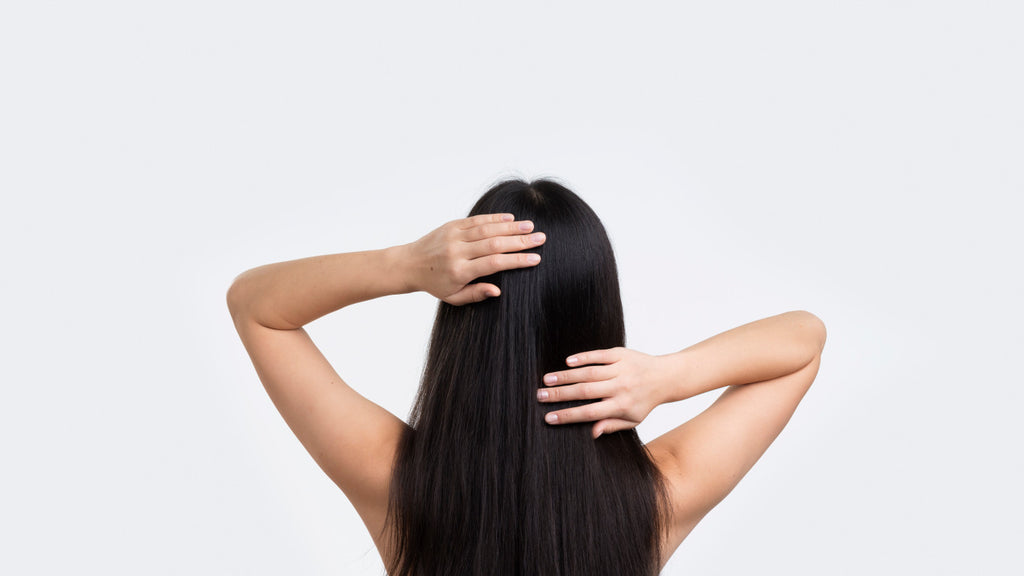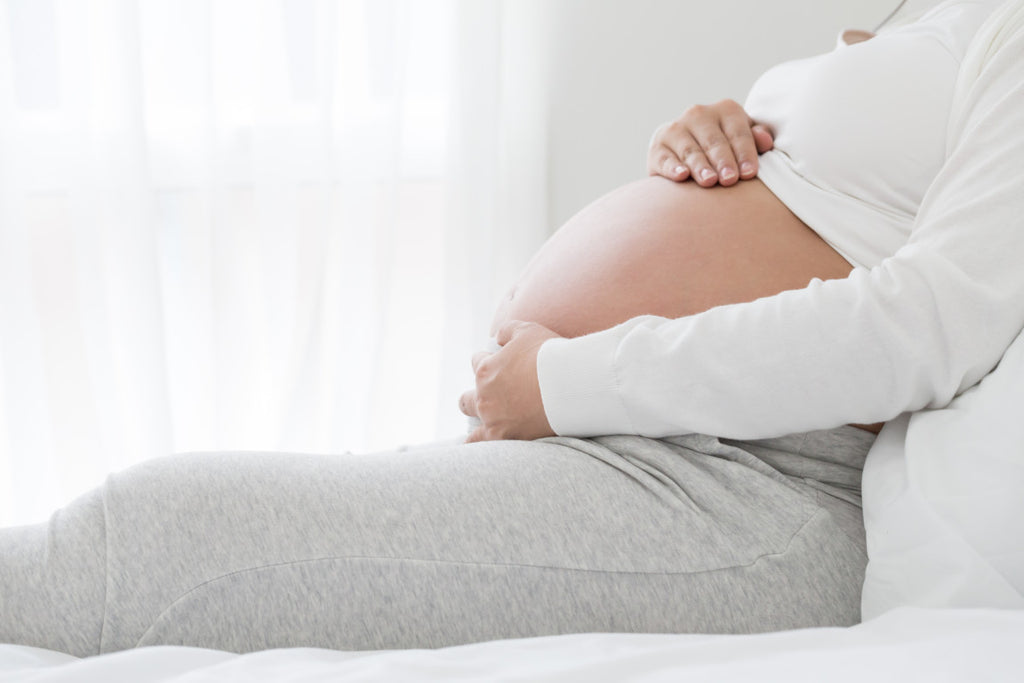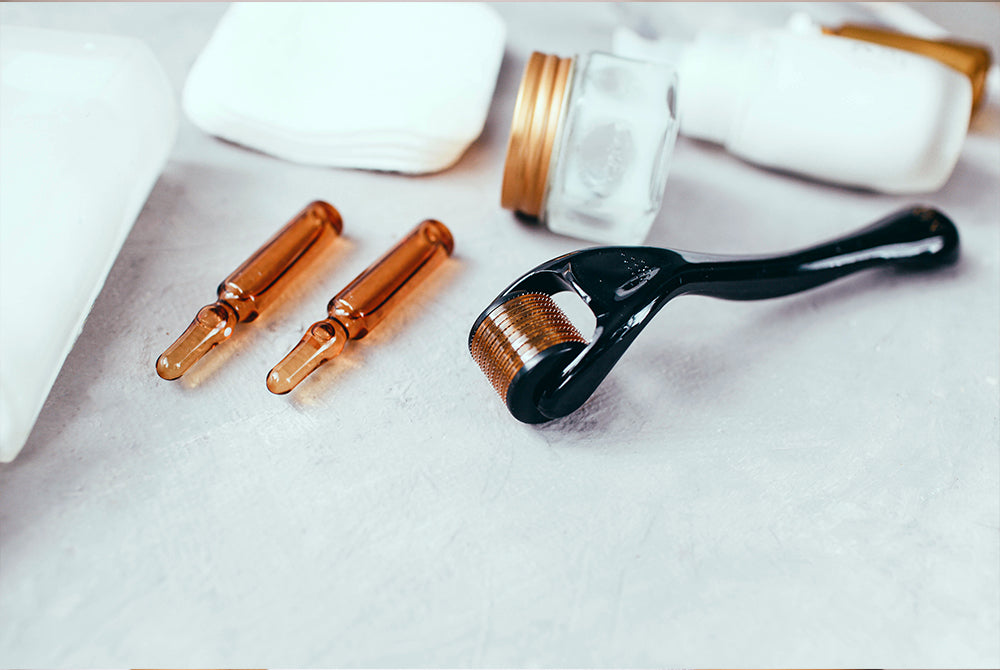Fast Hair Grow Guide 101: How To Make Your Hair Grow Faster And Naturally

Getting long hair or beautiful strands is not easy. Many people enthusiasm question like "How to make hair grow faster". As many people already know, vitamin E supplements and biotin pills are not new for growing hair faster. Hair growth is based on several factors.
Curious, keep scrolling to know the details.
How Fast Does Hair Really Grow?

A common question is how long does it take to grow hair? The hair grows per month between 0.5 and 1.7 centimeters. It means 0.2 to 0.7 inches.
Other factors contributing to the hair growth speed are age, genetics, pregnancy, and health. Many people want to know the possibility of growing 3 inches of hair within two months. The short answer is you cannot see 3 inches of hair growth in 2 months.
The key to fast hair growth is in your diet. Your hair requires a balanced diet full of nutrients. Foods you eat must include minerals and vitamins such as niacin, biotin, vitamin C, zinc and iron, to support hair growth.
The various factors determining how long does it take hair to grow are based on:
- Genetics: When hair grows actively is called the anagen phase. The phase lasts for two to six years. Genetics is playing a vital role in the anagen.
- Ethnicity: The hair growth dictates characteristics and shapes. The Asian follicles are round, black or brown color, straight hair growing in a month over half an inch. The Afro hair has tight curls with slow growth. The follicles are elliptical. It is more fragile. The Caucasian hair comes in different textures. The follicles can be oval with the highest density, growing per month within half an inch.
- Hair color: Considering hair color is seems not irrelevant to answer how long does hair takes to grow. But there are some relevancies. Blondes have more hair than black hair. Brunettes have less and redheads the least. Typically, the blonde hair is prone to break and does not grow fast or longer.
- Gender: Men's hair grows more quickly and longer. Female hair is exposed to hair straighteners, dryers, and extensions. These limit the hair growth and existing hair damages. Thus, it gives the impression that the hair growth of females is not fast.
- Age: With age, hair pigment turns grey, hair loss and thinning are in midlife affecting hair growth. This happens with the shortening of the anagen phase. Scalps also age and become less effective.
- Climate: In hotter climates, more natural oils are produced in our scalp, and on brushing oils, it encourages hair growth faster.
- Hair supplements: These claim the hair growth speed. Including vitamin C, protein, essential nutrients, iron, and biotin promotes hair growth. The hair grows in a week could vary on taking hair supplements. It grows 2.45 millimeters or 0.01 inch longer.
- Pregnancy: During pregnancy, thicker hair is experienced, regardless of how long does it take for hair to grow. There is the thickness in hair owing to anagen prolonged phase, and this is a result of hormonal changes. While new mothers lose some of their hair.
- Special reasons: The growth cycle is disturbed due to hair transplants and chemotherapy. Patients have to be calmer to see hair regrowth as your body needs to adjust.
The Stages of Hair Growth

People's skin has little pockets for hair growth. On birth, people have hair follicles around 5 million. There are three stages of hair growth.
The Anagen Phase
In this phase, the scalp hair is active for two to six years. The hair root cells divide fast, and majority hairs seen on your head belongs to the anagen phase. The question of 'how long does hair grow' depends on the time the hair follicles are in the anagen phase, and this is determined genetically.
The Catagen Phase
This phase occurs at the anagen phase ends. It is a transition stage where the hair is detached from the blood supply. This stage or phase is for two to three weeks.
The Telogen Phase
On completing the catagen phase, your hair follicle rests for over 3 months. You keep losing per day around 50 to 100 hairs. After around three months, new hair growth will be seen as your follicle enters the anagen phase.
Not all the hairs undergo these stages. There will be hairs in some phase, and so you do not go bald temporarily.
Can I Increase The Anagen Phase For Hair Growth?
The anagen phase hair growth is based on age, genetics, health factors, ethnicity, diet, and time of a year. Mostly, hair growth based on ethnicity does not show much difference in men. While if you want to how long does it take hair to grow an inch, it requires a 2 to 3 months period of time.
In the anagen phase, you can increase hair growth.:
- Healthy food and diet: Intake of nutrition and water. Protein is the main component. Add healthy fats, minerals, and foods rich in vitamins C, B, D, iron, and zinc found in eggs, fish, or carrots. Also, fatty acids are essential for good hair health. Apart from proper food, there should be no stress, or else it will result in hair loss.
- Hydration: Drinking water boosts the growth of hair. Staying hydrated releases stress and toxins. For healthy hair during the anagen phase, drink lots of water. It will keep your hormones level in condition.
- Care in hair brushing: Hair brushing affects the growth of hair. Gentle hair brushing enhances blood circulation, allows the nutrition to stay in the scalp.
- Treat roots with care: The increase of the anagen phase for the hair growth could be done by massaging the scalp with essential oils. Massage using oil on your scalp and relax for releasing the stress.
- Use supplements: Supplements such as Zinc, Niacin, or Biotin ensure boosting your anagen phase.
Increase hair growth during the anagen phase and see your dream coming true.
How To Make Your Hair Grow Fast And Stronger?

1. Keep Up With Vitamins And Nutrients
Hair loss and thinning is a result of nutritional deficiency. With age, hair growth decreases as blood circulation reduces. These slow down the growth of hair. Increasing vitamins and nutrients help in increasing the bloodstream. Also, Vitamin E, an antioxidant, promotes hair growth. Yet, speak to your doctor before taking any nutrients and vitamins
2. Apply Essential Oils
Applying coconut oil is common. It has an affinity for boosting hair growth. The good thing about coconut oil contains fatty acids. The structure and molecular weight of the coconut oil sinks into the follicles of your hair. Thus, it helps to repair and stimulates the growth of hair. Moreover, it gives natural shine, reduces protein loss, and eliminates scalp dryness.
You can boost the growth of your hair using essential oils such as jojoba, peppermint, or rosemary oil. The other oils that are used include lavender oil, cedarwood, thyme oil, tulsi oil works great with a scalp massage.
3. Try Topical Ointments
Medication as topical ointments is recommended to prevent hair loss and for hair regrowth. Topical Minoxidil is recommended to stimulate hair growth and to stop thinning of hair. Many people believe this medication works, and the results are significant. Yet, check with a dermatologist to know if 2 or 5% minoxidil concentration is right and learn to apply it.
Minoxidil is available into two different forms, such as a liquid or a foam. Minoxidil can be applied to the scalp directly, two times a day for best results. Initially, there may be increased shedding, but after 4 to 12 months, it will thicken.
4. Take Keratin Supplements
Keratin provides structure and strength to hair. Keratin supplementation becomes essential as, with age, we lose keratin. You can include these in your shopping list to boost keratin:
- Protein-rich foods: These provide amino acids for structural protein synthesis, particularly keratin. Include fish, eggs, Red meat, nuts, yogurt, and milk.
- Biotin-rich foods: For amino acid metabolism to build keratin for hair stronger. Include Nuts, mushrooms, salmon, cooked yolks, cauliflower, and avocado.
Vitamin A foods:
- Keratin synthesis is based on vitamin A. Include Spinach, Kale, herring, broccoli, and liver. Vitamin A gets absorbed with fatty foods.
- Vitamin D foods: Vitamin D will help regulates the growth and development of synthesis for keratin. Include Raw milk, salmon, tuna, eggs, and mushrooms.
- Omega 3 fats: Omega 3 will promote the production of fatty acids and offsets adverse effects on your skin and hair. Include Nuts, tuna, mackerel, and salmon.
- Zinc foods: For the synthesis of keratin, zinc is required so that it promotes collagen. Add milk, almonds, crab, cheese, Red meat, and dark chocolate.
5. Use Protein
For more reliable and faster hair growth, eating a rich diet having biotin and protein is recommended. Include foods such as Eggs, Salmon, Seeds and Nuts, Dairy, Bananas, Avocados, Cauliflower, Sweet Potatoes, and Oats.
6. Derma Rolling
Derma rollers have microneedles on the cylinder rollers, and they come in varying lengths. Microneedle roller prompts the scalp to produce collagen and to support the hair follicle in the growth stage. Thus, it improves blood flow.
After derma rolling, apply peppermint oil on your scalp, it helps to soothe your scalp and in regrowth hair. Initially, use peppermint oil by mixing it with other carrier oils. The micro-needles trigger stem cell production and contribute to the hair growth cells production.
7. Caffeinate Your Follicles
Caffeine helps to increase blood circulation, and it boosts healthy hair follicles. As the scalp receives blood circulation due to Caffeine, the oils do not get stripped off. The moisture is retained, and a natural sheen is created.
Use espresso as it is a strong coffee. Take 2-4 cups of brewed cold coffee, based on your hair length, and pour the brew from a spray bottle to your hair. Firstly, Wash and condition. While the hair is wet, spray the brewed coffee, massage your scalp and place a shower cap for 20 minutes. Rinse your hair.
Mix a leave-in conditioner for extra moisture layer before applying brewed coffee. Rinse coffee after 20 minutes using lukewarm or cold water and pat it dry. The Caffeine is sure to reach your hair follicles.
What Factors Can Affect Hair Growth Rates?

Factors affecting hair growth are:
- Hormonal or genetic medications and imbalances affect hair growth. Slight hormonal changes are enough to affect your hair health. Intake of medications also impacts the hair growth.
- Stress leads to hair loss. Proper management is essential for handling scalp conditions. However, not all hair loss is permanent.
- Nutritional deficiencies, such as low iron levels may affect hair growth. Balance of diet and nutrition is essential to offer extra support. This is required during menopause, summer, or after pregnancy.
- Crash diets or low protein shifts into the catagen for hair growth. Low dietary affects the catagen phases longer.
- Low Vitamin H or biotin also results in decreased hair growth. Biotin refers to B Vitamins required for collagen and elastin formation. A combination with zinc is an ideal suggestion for hair growth.
- Cosmetic procedures may have harsh effects stripping out natural hair oils. Sun exposure causes dryness and hair to break off. You should be aware radicals damaged hair looks dry, dull, and fragile.
Hair Growth During And After Pregnancy

During pregnancy, hair growth and texture would change for many women. This is due to the hormones changes, but it will not be permanent. Some hair will lose in the postpartum period.
Also, hormonal changes make your hair thinner or thicker. Your hair follows a natural cycle where it rests for 2 or 3 months, and new hair grows. In pregnancy, the hair strands become thicker as it stays in the growing cycle phase for a longer time. This happens due to the estrogen hormonal increases.
Some experiences of hair falling out caused by estrogen hormonal decrease. This happens because of:
- Pregnancy hormonal imbalance.
- Oral contraceptive pill stopped.
- Experiencing miscarriage or abortion.
It is common during pregnancy for women to lose or gain hair. Once the estrogen is at normal levels, the hair condition will move from the resting phase to the growth phase. This will again fall out after 3-4 months of childbirth.
The hair loss is a usual pattern during pregnancy. It returns to normal in a year.
The Inversion Method
The inversion method comprises mainly of scalp massage. This is done to increase the hair growth rate. Also, the scalp massage helps in relieving headaches and reducing muscle tension.
When you massage your scalp, keep your head upside down to make sure your hair follicles receive proper blood flow. This is a slow process to see hair growth. Likewise, the inversion method is suitable depending on the hair type and scalp to show hair growth.
How Does The Inversion Method Work?
-
Oil on your scalp.
-
Massage your scalp gently.
-
Invert upside down your head for four minutes.
The oil can be your choice. But, keep that in your mind that you must massage with your finger after applying your favorite oil to promote increasing your blood flow and circulation. Keep a circular motion, going clockwise and anti-clockwise.
Hang your head upside down and hold for 4 minutes this position. Wash hair thoroughly, repeat daily each month for one week.
The results vary and inconsistency, you may not get anticipated outcomes.
FAQ
Q: Is it mandatory to follow every day the inversion method?
A: The inversion method is beneficial and is recommended to perform at a time for a week.
Q: What stimulates the growth of hair?
A: There are ways to ensure hair growth:
- Daily scalp massage makes hair follicles healthy and your hair thick.
- Gentle brushing
- Eat a balanced diet with proper nutrition
- Skip unnecessary shampooing every time
- Use silk pillows
- Rinse with cold water your hair
- Use herbal supplements
Q: Does hair grow after thinning?
A: When the hair gets thin, many people feard for baldness. However, you do not fear your thin hair. Typically, it will grow back in six months.
Q: Foods causing hair loss?
A: Foods rich in carbohydrates such as pasta, bread, potatoes, and white rice. These have a high glycemic index that breaks the sugars quickly and causes inflammation.
Fried foods have hydrogenated oils and high-fat, contributing to hair loss.
Q: Vitamins to take for hair growth?
A: Vitamin A reduces the breakage of hair. Zinc and selenium are helpful minerals to repair of hair tissue. Vitamin C promotes collagen production and iron absorption, which makes hair more energetic and healthier.
Q: How much time does it take to see 3-inch of hair or 3 inches hair growth?
A: To see 3 inches of hair growth, it takes around six months.
Conclusion
Hair grows at different rates based on many factors. There is not much evidence suggesting supplements or specialist shampoos to escalate the hair growth rated. However, knowing how to make hair grow faster helps you to prevent losing hair and make your scalp healthier. The proper nutritious diet plan with protein will feed the blood vessels of your hair roots with nutrients and oxygen, which is essential and multiply the growth of healthy hair.




Leave a comment